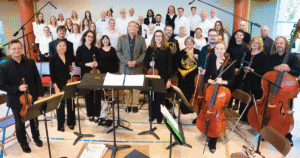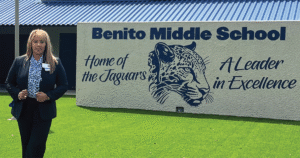The murmur of conversation echoes around the Omar K. Lightfoot Senior Recreation Center on N. 56th St. in Temple Terrace on May 12. People sit around at folding tables, discussing transportation topics with Hillsborough County officials. While one county employee guides the conversation, another takes notes on an oversized notepad on an easel.
The gathering is the fourth (and final) round of more than 30 public meetings, part of the “Go Hillsborough” transportation initiative, an ongoing study to find a consensus of the county’s transportation needs, possible funding options and how best to allocate that funding for desired transportation projects. The overall goal is to create a “Community Transportation Plan” that will help determine future transportation projects, based upon community consensus.
More than 1,500 people from around the county attended the meetings, two of which were held in our area during the past two months — at the New Tampa Rec Center (located off Commerce Park Blvd.) on March 9 and at the New Tampa Regional Library on Cross Creek Blvd. on April 27. Each meeting had a different topic.
“This is a multi-phase project,” said Hillsborough County’s director of strategic planning Eric Johnson at the April 20 meeting at the New Tampa Library. “We started out getting a sense of the types of transportation improvements that people are interested in, whether it’s related to roads or related to transit” (or both).
In the second round of meetings, Johnson said that the county brought back presentation boards outlining what people had reported at the first meeting. “We started to look at consistencies across the communities,” Johnson explained.
Hillsborough County is about 1,000 square miles and he said that construction, maintenance, new intersections and transit were strongly supported throughout the public meeting process.
The third round of meetings showed the public what the types of projects people requested at previous meetings could cost and how they could be paid for.
“Part of helping people understand what these projects cost is showing them,” Johnson said, pointing at a presentation board outlining the cost for a new multi-use trail. “For example, for just a multi-use trail, the cost is more than $400,000 per mile. Why does it cost that much? We have to buy the land and build the trail. Plus, we’ve got to install signs, lighting and the surface itself. We’re acclimating people to what these projects cost, based upon the elements of them. Next, we’re going to try to acclimate people to the way we can pay for these things.”
Johnson explained that the county continues to be aggressive about going after state and federal transportations grants, but they typically require matching funds. He noted that to raise those funds, there are several options available.
Johnson broke down the four types of options available to raise significant money for transportation, including the existing Community Investment Tax that’s been in place for nearly 20 years
“We’ve spent half of every dollar we’ve taken in on transportation, but we’re still (falling behind),” he said, adding that an up-to-five-cent gas tax potentially could generate up to $25 million per year; raising the property tax by one dollar per every $1,000 of taxable value (which could raise about $70 million per year); or raising the county sales tax by one percent for a period of time, which could raise up to $200 million per year, but requires a voter referendum.
“People seem to like the gas tax and sales tax ideas because of their equality,” Johnson explained. “Everybody pays them.”
According to public comments, Johnson said that 70 percent of survey participants showed support for a gas tax and 67 percent were in favor of the one-cent sales tax, with road maintenance as the most desired allocation.
After reviewing the various presentation boards at the April 20 meeting, Easton Park resident Cyndi Dyson said she was skeptical about widening more roads.
“I know a lot of people are interested in widening roads, but I think that the county needs to look at whether it’s more important to people to widen the roads or add more buses,” Dyson said. “A lot of people that live in my neighborhood take the bus downtown for work.”
Tom King said that he’s been driving through road construction in New Tampa since he moved to the area in 2006.
“I think transportation improvements will slowly come to fruition,” King said. “It’s taken a while just to get to this point. I’ve always felt that public transportation in Hillsborough County is horrible. We need to see the implementation of a better transit system. Light rail could take you to downtown Tampa and then another rail could take you to St. Pete. Connect the hubs.”
The county is still collecting transportation comments. To check out presentations from each step in the study and leave your own “two cents,” visit GoHillsborough.com.





No comment yet, add your voice below!